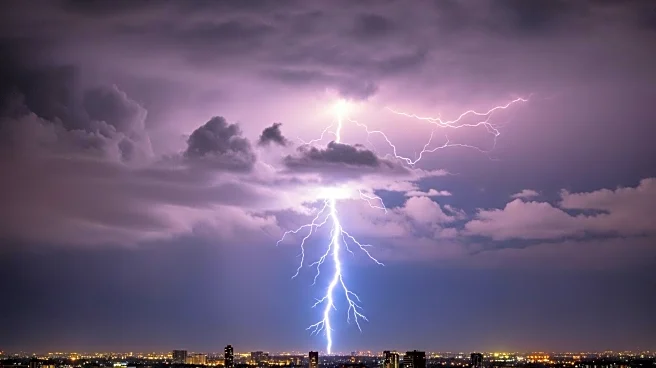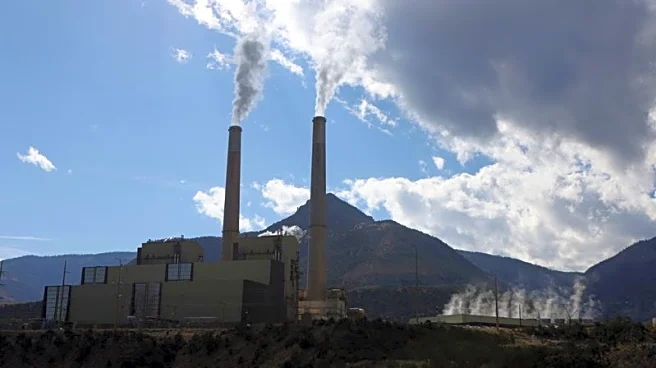What's Happening?
President Trump, during his campaign, promised to cut electricity prices in half within 12 to 18 months if re-elected. However, electricity costs have been rising significantly, with prices increasing by 5.5% over the past year, which is twice the rate of overall inflation. This surge is attributed to various factors, including the growing energy demands of data centers driven by the artificial intelligence boom. Residential electricity prices have spiked in several states, causing financial strain for many households. The Trump administration has been rolling back regulations from the previous administration, aiming to lower energy costs, but the impact has been mixed. Analysts point to a combination of fast-growing demand, supply constraints, and infrastructure costs as contributors to the rising prices.
Why It's Important?
The rising electricity prices have significant implications for U.S. households and businesses, affecting the cost of living and operational expenses. The increase in energy costs can lead to financial strain for families, especially those already struggling with utility debts. The situation also highlights the challenges in balancing energy demand with infrastructure capabilities, particularly as AI and data centers continue to expand. The administration's focus on fossil fuels over renewable energy sources may further complicate efforts to stabilize prices and ensure reliable energy supply. The economic impact is broad, potentially affecting consumer spending and business investments.
What's Next?
The Energy Information Administration projects that retail electricity prices will continue to rise, with increases expected in the coming years. The Trump administration's policies, including the halting of renewable energy projects, may face criticism and legal challenges, particularly from states with high energy costs. There is potential for increased pressure on the administration to address the affordability and reliability of energy supply. Stakeholders, including energy companies and consumer advocacy groups, may push for more sustainable solutions to manage demand and infrastructure needs.
Beyond the Headlines
The focus on fossil fuels and the rollback of renewable energy incentives could have long-term environmental and economic consequences. The decision to halt wind farm projects may impact regional energy reliability and contribute to higher costs. The administration's stance on energy policy reflects broader ideological debates about the role of renewables in the U.S. energy landscape. The ongoing challenges in managing energy demand and infrastructure highlight the need for strategic planning and investment in sustainable energy solutions.












